As a little girl, growing up with Charcot-Marie-Tooth Disease (CMT), Wendy Lowe spent a lot of time in the hospital. It was such a kind, friendly environment, however, that Wendy felt very comfortable. “I was there so much it was almost like a second home for me. So, it seemed natural for me to choose that setting for my career.” In spite of being told she wouldn’t be able to do it Wendy, now 25, is a nurse.
Employed at Shands Jacksonville Medical Center in Florida, Wendy works 12-14 hour shifts in the Trauma Surgical Intensive Care Unit. This type of care requires her to turn her patients in bed every two hours to prevent bed sores. At just 105 lbs. herself, Wendy admits it can be difficult especially if someone is obese. “There are times, at the end of a shift when I feel like I’m 45 instead of 25.” Why would someone put themselves through so much? “My work is important to me so I put forth my best effort. I take pride in my work and hope it makes a difference in someone’s life.”
Wendy is no stranger to physical difficulties. CMT has affected Wendy’s father and sister which brought about early testing for her when she was a toddler. “I always felt different from the other kids. I couldn’t run, or participate in sports and I wore leg braces. The only thing I could do was ride a bike.” Even sleeping was difficult because of severe leg muscle cramps. The kids in her elementary school made fun of her “skinny legs” and braces. Wendy stopped wearing braces in middle school in an effort to fit in. She feels she still carries the scars of that teasing in the form of low self-esteem.
In 2003, Wendy needed reconstructive foot surgery. She was told to have one foot operated on at a time but now says had she done it that way, she isn’t sure she would have had surgery on the second foot. “For me, surgery was the worst thing ever. It was so painful. I couldn’t walk for six months, and my feet had to be wrapped in ace bandages just to touch the floor.” It is easy to understand the impact of this experience on Wendy’s ability to be compassionate. “I feel a tremendous responsibility for the quality of a patient’s experience in my care.”
Unfortunately, Wendy isn’t always the recipient of compassion. “I try not to let CMT define me. But I have a difficult time when people say things like, ‘You can’t have anything wrong with you–you look normal.’” A modest person, Wendy finds it uncomfortable to explain herself so much. “People don’t understand my weird gait. I’m physically tired all the time as well as being tired emotionally of the chronic pain. Whether it is my knees or feet, something always hurts.” It isn’t any easier when she sees a new doctor. “That’s when I have to explain all about CMT. And because I don’t have any reflexes in my legs, I have to stop doctors from hitting me too hard while trying to check for them. I don’t think a lot of doctors really listen to me about CMT. I wish someone would listen to me.”
The future is a concern for Wendy, “I don’t know how long I can work standing all day. I might want to go back to school to become a nurse practitioner.” On her days off this summer Wendy has been working on the necessary pre-requisites. Wendy isn’t all work though. She enjoys going to the beach and spending time with friends and her boyfriend. She also plans to take up yoga as a way of coping with some of the effects of CMT.




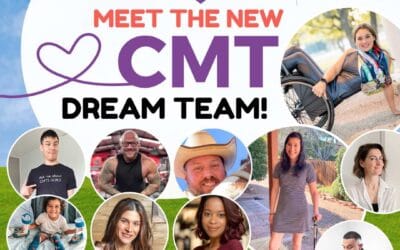

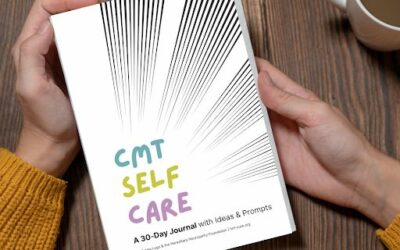
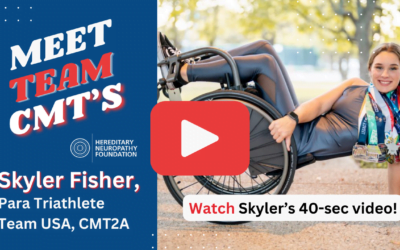
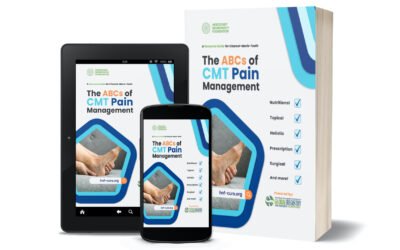
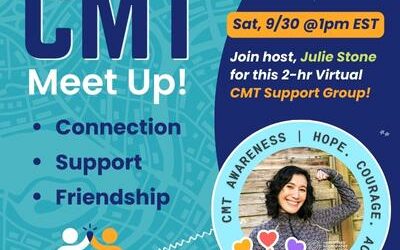


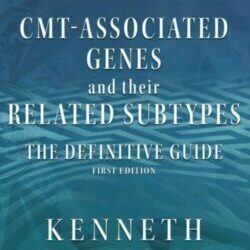

Wendy, I know this article is dated now, but I would love to chat with you sometime if you ever see this. I have been dx’d with Mitochondrial Disease, docs are thinking a type of CMT now that my gait has changed and neuropathy developed very recently. I was supposed to be going into a nursing program but I am unsure of what it will take and if my body can withstand it. I also l live near Jacksonville! My email is [email protected]
If you see this and wouldn’t mind giving me a few pointers. I think you’re a very brave and inspiring woman. I hope you’re still thriving!
Hi friend! Still thriving I have actually
Moved on and am
Now flight nurse in JacksonvilleN feel free to reach out to me! I can definitely discus the good, bad, and the ugly! I am sorry that I am just now seeing this! ♥️
Wendy–read your story. All cases of CMT are different, but are you aware of Helios braces? I have late onset CMT. I have had a weird gait, no balance and fatigue when standing–even with standard AFO or Blue Rocker braces. In 2010 I went to Las Vegas and got Helios braces. They are totally different. The weird gait is almost nonexistent; no problem at all with balance; and no more fatigue while standing, even for long periods. These Helios are nothing short of miraculous. Check them out at http://ordesignslv.com/ . They are expensive, but worth every penny. Call me at 703-999-8439 if you have any questions about these braces. I just did a 65 mile bike ride this past Saturday with them!
Wendy, Congratulations on becoming a nurse and the work you are doing. I tried to become a nurse but could physically not do it. I kept dropping things in my sterile field and would have to through everything out and start over only to have it happen again. I also could not work fast enough to get everything done in the allotted time. I transferred to Social Work and had a very satisfying 30 year career before I retired to take care of my Mother who has CMT, severe RA, and now dementia. I had to place her in a facility when she had a stroke a year ago and I could not transfer her (three person transfer)because I nam not stable enough on my own feet.
Thanks Jim, I used to work in the cardiac ICU and now I work trauma ICU which is more challenging on my body. I try to work through it and I normally have no issues but in march my sesmoid bone in my right hurt has become very painful and has really taken a toll on my happiness. I find myself taking ibuprofen several times a day, which I dislike doing… but its the only way I can make it through my day. I wish you the best of luck as well!
Wendy- Thanks for sharing your story. While I don’t have anyone we can identify as having Charcot-Marie-Tooth in my family, much of your story makes sense to me. I cannot remember finding it easy to run. But, riding a bicycle helped me feel more like the other kids. I wasn’t as brave as you. I had wanted to study animals as a field biologist, but felt I could not do it. But I have had a wonderful career as a social worker, now on disability. After my surgeries, I was able to leave the pain behind. I know what it was like to live with that and trying to help people understand, while I often did not “look” disabled, my body does not work like others. Keep up the good work. And really consider the nurse practitioner idea. I have worked with many as colleagues and as treatment providers.